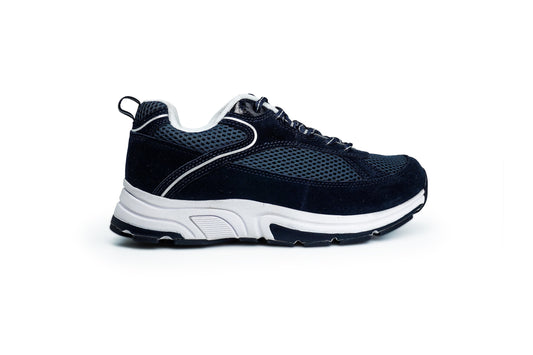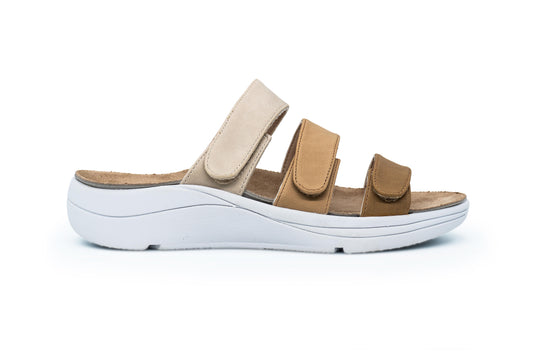Diabetic Shoes vs Regular Shoes: Navigating Footwear for Optimal Health
Navigating the realm of footwear becomes particularly important for people with diabetes, as the wellbeing of their feet demands extra attention.
In the quest for comfort, protection, and health, the distinction between diabetic shoes and regular shoes is extremely important.
In this article, I will shed light on the unique features, benefits, and considerations that set these two types of footwear apart. Understanding these distinctions will hopefully help people living with diabetes find the shoes that will keep their feet healthy and comfortable.
So, what differentiates diabetic shoes from regular shoes? To understand the difference between diabetic shoes and regular shoes, we must first ask what diabetic shoes are.
What are diabetic shoes?
Simply put, diabetic shoes are footwear specifically designed to address the needs of individuals with diabetes.
People with diabetes are at a higher risk of developing foot-related complications due to factors such as reduced circulation, nerve damage (neuropathy), and a decreased ability to heal wounds.
These shoes play a crucial role in decreasing the risk of diabetic foot ulcers and, consequently, lowering the likelihood of amputations. They are constructed to offer both support and protection to the feet, while effectively minimizing pressure points.
In addition, diabetic shoes typically feature extra depth, which allows ample room for accommodating diabetic inserts or custom orthotics.
Still, despite their specialized design, these shoes come in a variety of styles that closely resemble regular footwear, offering both functionality and aesthetics.
What makes diabetic shoes different?
What makes diabetic shoes different is their distinctive construction, which prioritizes the comfort and wellbeing of people with diabetes.
These shoes feature a protective interior crafted from soft and cushioned materials, with no overlays or stitching that remains unobtrusive, to avoid causing skin irritation.
Moreover, their design is meticulously crafted to alleviate pressure on the forefoot, ensuring that areas such as the toes, sides of the foot, and back of the heel are not subjected to discomfort or irritation.
Special features of diabetic footwear
Diabetic footwear must contain specific features and be designed and constructed in a way that alleviates the foot conditions to which diabetics are prone.
The best shoes for diabetics include the following special features and qualities:
- Protective interior that is made from soft material, and stitching that doesn’t protrude so as not to cause irritation.
- Non-binding uppers that insure that there is no pressure on the foot. In contrast, regular shoes often cause pressure in the forefoot area or the back of the shoe, as they are often constructed from firm materials and in a way that might irritate bunions, the toes, or back of the heel.
- Extra depth design that provides a pressure-free fit and can accommodate thick orthotic inserts.
- A deep toe box that provides extra room for toe movement and avoids pressure on the toes.
- Lightweight, cushioning soles that facilitate mobility and stability, and reduce impacts on the foot.
- Stretchable uppers might be the ideal solution for conditions caused by severe diabetes or neuropathy. These stretchable shoes conform to the contours of the foot and help eliminate pressure points.
- Special orthotic insoles that provide arch support, reduce pressure on the bottom of the foot and offer good cushioning.
Advantages of diabetic footwear
We can now see that the construction and design of shoes for diabetics offer some very attractive advantages. In addition to providing pain relief and enhanced levels of comfort, diabetic footwear can also help do the following:
- Provide better motion control
- Promote circulation
- Prevent skin breakdown
- Prevent the formation of calluses
- Reduce the occurrence of foot problems in high-pressure areas of the foot.
Are diabetic shoes a must for diabetics?
Many people ask me, “Why can’t I just wear comfortable, regular shoes if I have diabetic neuropathy or other foot problems related to diabetes?”
The simple answer to this question is another question: why take that risk?
Many of the foot problems caused by diabetes can turn into more serious health complications, but they can also be prevented. It is just common sense to take measures that promote better foot health and overall health, i.e., wearing the right footwear.
Can people that don’t have diabetes wear diabetic shoes?
Of course! In fact, it is quite common for non-diabetics to purchase diabetic shoes precisely because they provide so much comfort and support. They are also great for foot problems that are not necessarily related to diabetes, such as heel pain, ball of the foot pain, blisters, flat feet, wide feet, etc.
Browse our Prescribed Orthotics to learn more.








